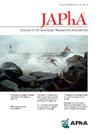表征药房沙漠和设计一个模型,以尽量减少不公平的药房分布在弗吉尼亚州。
IF 2.5
4区 医学
Q3 PHARMACOLOGY & PHARMACY
Journal of the American Pharmacists Association
Pub Date : 2025-03-01
DOI:10.1016/j.japh.2025.102334
引用次数: 0
摘要
背景:近年来,药房关闭在美国变得越来越普遍。以前的文献强调社会经济和种族差异的分布药房沙漠。目的:确定和表征弗吉尼亚州的药房沙漠,并模拟潜在的地点,以尽量减少药房分布的不公平。方法:本横断面研究使用弗吉尼亚州药事委员会的有效药房许可数据,通过同时满足2个标准来确定被认为是药房沙漠的人口普查区:1)低收入地位(1 - 20%的居民生活在联邦贫困线以下,或城市、郊区和农村人口普查区的家庭收入中位数分别为1、5或10英里)。使用Wilcoxon秩和检验比较沙漠和非沙漠地区的人口统计学和社会经济特征。已确定的药房沙漠中的位置在10,000次独立迭代中随机生成。结果:在2198个人口普查区中,51个被认为是药房沙漠,69个仅符合低准入标准。药店沙漠在城市人口普查区更为常见(5.5%),其次是农村(2.9%)和郊区(0.1%)。与非沙漠地区相比,药房沙漠地区18岁以下的居民比例明显较低,黑人居民比例较高,没有医疗保险,只有医疗保险或医疗补助,家庭收入中位数较低,生活贫困的居民比例较高。通过地理空间模拟,确定了44个地点,在这些地点增加药房服务可以显着改善获取,每个地点可能使超过10,000人受益。结论:弗吉尼亚州51个地区(主要在城市地区)被认为是药房沙漠。与非沙漠地区相比,药房沙漠状态与18岁以下居民比例较低、黑人和未投保/公共保险居民比例较高以及高贫困水平相关,突出了药房获取的差异。地理空间模拟确定了几个地点,在那里药房服务的安置可以使生活在沙漠地带的大多数居民受益。本文章由计算机程序翻译,如有差异,请以英文原文为准。
Characterizing pharmacy deserts and designing a model to minimize inequities in pharmacy distribution in Virginia
Background
Pharmacy closures have become increasingly prevalent in the United States in recent years. Previous literature highlights socioeconomic and racial disparities in the distribution of pharmacy deserts.
Objectives
To identify and characterize pharmacy deserts in Virginia and to simulate potential locations to minimize inequities in pharmacy distribution.
Methods
This cross-sectional study used active pharmacy permits data from the Virginia Board of Pharmacy to identify census tracts considered pharmacy deserts by simultaneously satisfying 2 criteria: 1) low-income status (>20% residents living below the federal poverty line, or median household income <80% of a local comparator); and 2) low-access to pharmacies (distance >1, 5, or 10 miles for urban, suburban, and rural census tracts, respectively). Demographic and socioeconomic characteristics of desert vs. nondesert tracts were compared using Wilcoxon rank-sum tests. Locations within identified pharmacy deserts were randomly generated in 10,000 independent iterations.
Results
Of 2198 census tracts, 51 were considered pharmacy deserts, and 69 met the low-access criterion only. Pharmacy deserts were significantly more common in urban census tracts (5.5%), followed by rural (2.9%), and suburban (0.1%). Compared to nondesert, pharmacy desert tracts had significantly lower percentage of residents under 18 year-old, greater percentage of Black residents, uninsured, with Medicare or Medicaid coverage only, lower median household income, and greater percentage of residents living in poverty. Through geospatial simulation, 44 locations were identified where adding pharmacy services could significantly improve access, each potentially benefiting over 10,000 individuals.
Conclusion
Fifty-one tracts in Virginia, primarily in urban areas, were considered pharmacy deserts. Compared to nondeserts, pharmacy desert status was associated with a lower proportion of residents under 18 year-old, greater proportion of Black and uninsured/publicly insured residents, and high poverty level, highlighting disparities in pharmacy access. Geospatial simulation identified several locations where placement of pharmacy services could benefit the largest number of residents living in desert tracts.
求助全文
通过发布文献求助,成功后即可免费获取论文全文。
去求助
来源期刊
CiteScore
3.30
自引率
14.30%
发文量
336
审稿时长
46 days
期刊介绍:
The Journal of the American Pharmacists Association is the official peer-reviewed journal of the American Pharmacists Association (APhA), providing information on pharmaceutical care, drug therapy, diseases and other health issues, trends in pharmacy practice and therapeutics, informed opinion, and original research. JAPhA publishes original research, reviews, experiences, and opinion articles that link science to contemporary pharmacy practice to improve patient care.

 求助内容:
求助内容: 应助结果提醒方式:
应助结果提醒方式:


